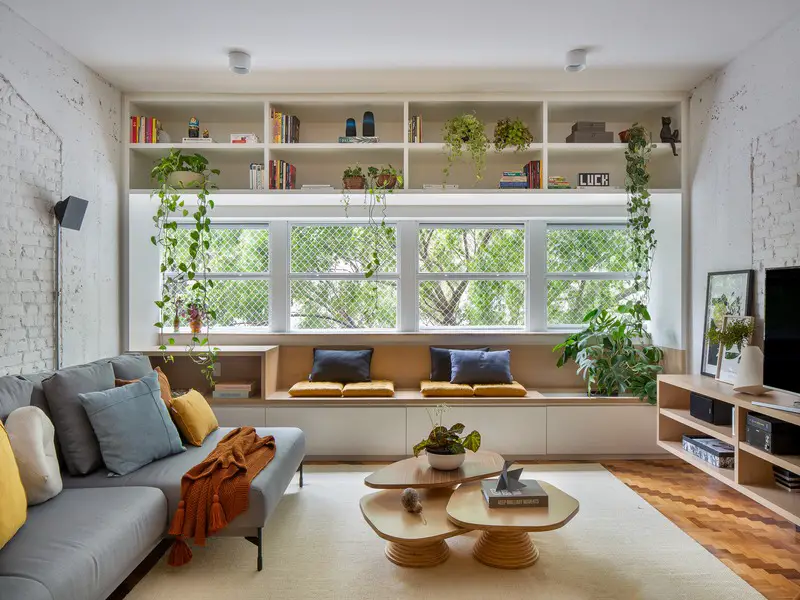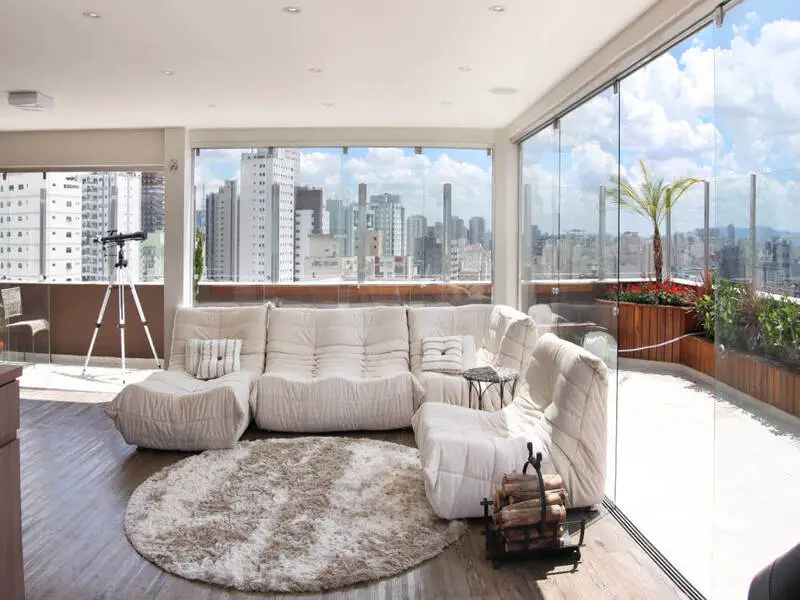Are you tired of your home decor feeling bland and uninspired? Adding patterns is an easy way to add some personality and interest to your space. But mixing patterns can be a daunting task, as it can easily become overwhelming or clash with other elements in your home. Fear not! With a few simple tips, you can confidently mix and match patterns to create a cohesive and stylish look.
Understanding Patterns
Before we dive into how to mix patterns, it’s important to understand the different types of patterns and how they can work together.
Types of Patterns
- Floral: Often associated with traditional decor, floral patterns feature blooming flowers and leafy vines.
- Geometric: Modern and bold, geometric patterns include shapes such as triangles, squares, and circles.
- Stripes: A classic pattern, stripes come in a variety of sizes and can be used to create both traditional and contemporary looks.
- Animal Print: A statement pattern, animal prints like leopard or zebra can add a touch of exoticism to any room.
- Plaid: Often used in rustic or country decor, plaid patterns feature intersecting horizontal and vertical lines.

Pattern Scale
Pattern scale refers to the size of the pattern’s motif. A large scale pattern has a larger motif, while a small scale pattern has a smaller motif. When mixing patterns, it’s important to vary the scale for a visually interesting look.
Pattern Color
The color of a pattern plays a significant role in how it works with other patterns in a room. Neutral patterns like black and white stripes can be mixed with any color, while bolder patterns may need to be paired with more muted patterns to avoid clashing.
Tips for Mixing Patterns
Now that we have a basic understanding of patterns, let’s dive into some tips for mixing them.
Start with a Neutral Base
Starting with a neutral base is a great way to ease into mixing patterns in your home decor. By using neutral colors like beige or white, you provide a clean and simple backdrop that allows the patterns to take center stage.
For example, you could start with a neutral sofa or rug and then add in patterned throw pillows or curtains. This will give the space a subtle hint of pattern without overwhelming it.
Alternatively, you could opt for a patterned rug or wallpaper as your focal point and then use neutral furniture and decor to complement it. This will create a balanced and cohesive look while still allowing the pattern to stand out.
Starting with a neutral base also gives you the flexibility to change up your patterns and decor over time. If you get tired of a particular pattern or color scheme, it’s much easier to switch out a few accent pieces than it is to replace large furniture items.
Vary Pattern Scale
Varying pattern scale is an important technique in mixing patterns in home decor. Using patterns of different sizes adds depth and interest to a room, making it visually appealing and engaging.
The key to making this work is to mix large-scale patterns with small-scale patterns. For example, you could pair a large-scale floral print with a smaller-scale geometric or stripe pattern. This will create a balanced look that doesn’t feel overwhelming or chaotic.
Another way to vary pattern scale is to use different sized patterns in different areas of the room. For instance, you could use larger scale patterns on larger furniture items such as sofas or chairs, and smaller scale patterns on accent pieces like throw pillows or curtains. This will help create a sense of cohesion and balance in the overall design.
When mixing patterns of different scales, it’s important to pay attention to color as well. Choose colors that complement each other and create a harmonious palette. For example, if you’re using a large-scale floral pattern in shades of pink and green, you could pair it with a smaller-scale geometric pattern in neutral shades like beige or gray.
By varying pattern scale in your home decor, you can create a unique and interesting look that reflects your personal style. It’s a fun way to experiment with different patterns and colors, and can add a playful touch to any room in your home.
Stick to a Color Scheme
When it comes to mixing patterns in home decor, sticking to a color scheme is essential to creating a cohesive and visually appealing look. Choosing a color scheme that works well with the patterns you want to use can help tie everything together and avoid a clash of colors and patterns.
One way to determine a color scheme is by using a color wheel. A color wheel is a useful tool that helps you see which colors complement each other and which colors clash. You can use it to find colors that work well together and create a harmonious palette.
For example, if you’re working with a patterned rug that has shades of blue and green, you could choose complementary colors like beige or white for your furniture and decor. Or, if you’re working with a floral print that has shades of pink and purple, you could choose complementary colors like gray or navy to balance it out.
It’s important to remember that sticking to a color scheme doesn’t mean using only one or two colors. You can still mix patterns of different colors as long as they fall within your chosen color scheme.
One way to do this is by using a dominant color for your larger furniture pieces, such as a sofa or chair, and then incorporating accent pieces in complementary colors. This will help create a balanced and cohesive look.
Mix Different Types of Patterns
When it comes to mixing patterns in home decor, it’s important to remember that you don’t have to stick to just one type of pattern. In fact, mixing different types of patterns can create an interesting and unique look that reflects your personal style.
For example, you could mix floral patterns with geometric patterns to create a playful and modern look. Or, you could pair stripes with animal prints to add a touch of sophistication and edge to a room.
When mixing different types of patterns, it’s important to keep the scale and color scheme in mind. Varying the scale of the patterns will help prevent the room from feeling too busy or overwhelming. Stick to a color scheme that complements the patterns and ties them together cohesively.
One way to mix different types of patterns is to choose one dominant pattern and then use smaller scale patterns as accents. For example, if you have a bold floral print on your curtains, you could pair it with smaller scale geometric patterns on your throw pillows or accent chairs.
Remember, mixing different types of patterns is all about experimentation and finding what works for you. Don’t be afraid to try new combinations and have fun with it! With a little bit of creativity and attention to detail, you can create a unique and stylish look in your home.
Add Solid Colors
While mixing patterns in home decor can add visual interest and excitement to a room, it’s important to balance the patterns with solid colors. Solid colors help break up the patterns and create a sense of visual space, preventing the room from feeling too cluttered or overwhelming.
One way to incorporate solid colors is by using them as a backdrop for patterned pieces. For example, if you have a patterned sofa, you could add solid colored throw pillows or a solid colored area rug to balance out the design. The solid colors will help create a sense of visual rest and give the eye a place to focus.
Another way to use solid colors is by incorporating them into the larger pieces of furniture, such as a solid colored sofa or armchair. This will help ground the room and provide a neutral base for the patterns to shine.
When choosing solid colors, consider the color scheme of the room and how the solid colors will complement the patterns. A neutral color such as beige, gray or white can provide a subtle backdrop, while a bolder color can add a pop of energy to the room.
Remember, mixing patterns and solid colors is all about balance. By incorporating solid colors into your design, you can create a visually interesting and cohesive look that is both stylish and comfortable.
Use Patterned Accessories
Introducing patterns to your home decor can seem like a daunting task, especially if you’re not sure where to start. One approach is to begin by incorporating patterned accessories into your design scheme.
Throw pillows, curtains, and rugs are all great examples of patterned accessories that can add visual interest to a room without overwhelming the space. These items allow you to experiment with different patterns, colors, and textures, and can be easily swapped out if you want to try something new.
When choosing patterned accessories, keep in mind the color scheme and overall aesthetic of the room. Consider the scale of the patterns and how they will work together with other patterns in the room. Mixing patterns with different scales, such as a large floral print with a small geometric print, can create a visually interesting and cohesive look.
In addition to adding patterned accessories, consider incorporating solid colors to balance out the patterns. A solid colored sofa with patterned throw pillows, for example, can create a balanced and stylish design.
Create a Focal Point
Creating a focal point in your room can help tie your patterned decor together and make a statement. One way to do this is to choose one pattern to be the focal point of the room.
This pattern can be a bold wallpaper, a vibrant area rug, or even a statement piece of furniture. By choosing one pattern as the focal point, you can ground the design and give the eye a place to rest. This can also help tie the other patterns in the room together and create a cohesive look.
When choosing a focal point pattern, consider the scale and colors of the pattern, as well as how it will work with the other patterns in the room. You want the focal point pattern to stand out, but not overpower the other patterns.
Once you’ve chosen your focal point pattern, you can use it as inspiration for the other patterns in the room. For example, if you’ve chosen a bold floral wallpaper as the focal point, you can incorporate smaller floral prints in the throw pillows or curtains. This will help tie the design together and create a cohesive look.
Play with Texture
Mixing patterns in your home decor isn’t just about mixing different designs, but also about playing with texture. Texture can add depth and interest to a space, and can also help tie different patterns together.
One way to add texture is through textiles such as throw pillows, blankets, and rugs. A textured throw pillow, for example, can add visual interest to a patterned sofa or chair. Similarly, a shaggy rug can add texture and depth to a room with patterned curtains or wallpaper.
When playing with texture, consider the scale and colors of the patterns in the room. You want the textures to complement the patterns, not clash with them. For example, a chunky knit throw blanket might work well with a smaller scale patterned sofa, while a shaggy rug might pair well with a larger scale patterned wallpaper.
Another way to add texture is through accessories such as woven baskets or ceramic vases. These items can add a tactile element to the room and help tie different patterns together.
Putting It All Together
To create a cohesive design using mixed patterns, let’s use an example of a living room.
Start with a neutral base such as a beige or white sofa. Add a large scale floral patterned rug in muted tones like beige, gray, and cream. Vary the pattern scale by adding a small scale geometric patterned throw pillow in a similar color scheme to the rug.
For the curtains, choose a bold stripe pattern in navy and white to add contrast and visual interest. Mix in animal print patterned accessories like a leopard print throw pillow and zebra print ottoman. Use a solid colored throw blanket in a matching tone to break up the patterns.
To create a focal point in the room, add a bold wallpaper in a large scale floral pattern in the same color scheme as the rug. This will ground the design and give the eye a place to rest.
Finish off the design by mixing in different textures like a shaggy rug and a velvet accent chair. This will add depth and interest to the space.
Conclusion
Mixing patterns in home decor can be intimidating, but with a few simple tips and tricks, you can create a cohesive and stylish look. Remember to vary the pattern scale, stick to a color scheme, mix different types of patterns, and add solid colors to break up the design. Don’t be afraid to play with texture and create a focal point in the room to ground the design.




